Last weekend I broke down. I bought a Kindle (a Kindle Paperwhite to be exact). Despite my ambivalence towards e-reading, it’s getting harder for me to deny the conveniences of an e-reader. I’m a reader. Although chasing a toddler around the house has but a kink in my reading style, I still try to get in as much eyeball-to-text time as I possibly can. When I go on a trip, I take as much care and effort packing my reading materials as I do packing my clothes. This little 5 x 7 inch device is making upcoming travel so much more convenient and amazingly less stressful. Instead of trying to squeeze in 3-4 different volumes I can just pop that Kindle in my purse and call it a day. It’s fantastic.
Will I stop buying and checking out print books from the library? No way. In fact, as I type, I have two books on my nightstand from the St. Mary’s County Library. The Kindle is just a new addition to my reading lifestyle and a great way to kick off the summer reading season. If you’re interested in getting your summer reading off right, the SMCM Library can help.
Kindles
We have 6 different Kindles for SMCM students, faculty, and staff to borrow loaded with all kinds of fantastic fiction. Want to find out what all the Game of Thrones fuss is about? Read it on our Kindle Fire. Curious about Gone Girl or Kate Atkinson’s latest, Life after Life? Read one on a Kindle Touch. For more about our Kindles and the books on them, check out our online Kindle Guide.
Popular Reading Collection
If you’re more of a print-on-paper kind of reader. We have you covered. Our popular reading collection has a great selection of fiction and non-fiction bestsellers to help you take a break from heavy academic reading. Take a walk up to the 2nd floor and hang a left. In the reading area you’ll find a beautiful water-front view and our awesome Popular Reading Collection.
St. Mary’s County Public Libraries
I wouldn’t be doing my due-diligence as a librarian if I didn’t do a little cross-promotion. We are fortunate to have an amazing public library system in our county. If you haven’t visited one of the branches in Lexington Park, Leonardtown, or Charlotte Hall, please do it. Their book, movie, and music selection is amazing! A few weekends ago I picked up Tom Perotta’s The Leftovers, a copy of the Alabama Shakes album, and Dinosaur vs. The Potty, a board book for my son. They have fun summer programming for kids too!
Summer Book Club
Since you’re doing all this reading anyway, you might as well win a prize or two for your efforts. The SMCM Library’s Summer Reading Program continues this year and gives all SMCM students, faculty, staff, and alumni a chance to contribute book reviews to the Summer Reading Blog and win prizes.
Happy Reading,
Ronnie


 Let me start by saying that this is the first book I’ve read of Hosseini’s. This perhaps is an advantage for me as I don’t have anything to compare it to — unbiased, if you will. That being said, I absolutely loved it. I fell in love with its many characters but found myself angered by them as well: their decisions, their lives, how things didn’t go the way they were supposed to. I found myself getting upset with Hosseini for robbing me of my picturesque image of how their lives should have played out.
Let me start by saying that this is the first book I’ve read of Hosseini’s. This perhaps is an advantage for me as I don’t have anything to compare it to — unbiased, if you will. That being said, I absolutely loved it. I fell in love with its many characters but found myself angered by them as well: their decisions, their lives, how things didn’t go the way they were supposed to. I found myself getting upset with Hosseini for robbing me of my picturesque image of how their lives should have played out.


 Picoult will have you on the edge of your seat guessing what will come next as what appears to be an open and shut case takes many unexpected twists and turns. This book explores to what lengths someone is willing to go for their loved ones. It will also have you questioning how well you know yourself and others.
Picoult will have you on the edge of your seat guessing what will come next as what appears to be an open and shut case takes many unexpected twists and turns. This book explores to what lengths someone is willing to go for their loved ones. It will also have you questioning how well you know yourself and others. 







 Mary Beth Lantham is an average mother of three teenaged kids and the wife of a respected ophthalmologist. She also owns her own landscaping business, where she carefully designs gardens for people in her town. Her biggest concerns entail getting her daughter Ruby through her Senior year of high school and helping her twin sons Alex and Max transition into high school, while dealing with Max’s depression. That is, until an unexpected tragedy changes her life forever, leaving her to pick up the pieces after her carefully constructed life shatters.
Mary Beth Lantham is an average mother of three teenaged kids and the wife of a respected ophthalmologist. She also owns her own landscaping business, where she carefully designs gardens for people in her town. Her biggest concerns entail getting her daughter Ruby through her Senior year of high school and helping her twin sons Alex and Max transition into high school, while dealing with Max’s depression. That is, until an unexpected tragedy changes her life forever, leaving her to pick up the pieces after her carefully constructed life shatters.
